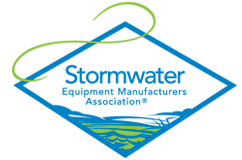- Home
- Who We Are
- Advocacy
- Stormwater Basics
- BMP Maintenance
- BMP Systems
- BMP Fact Sheets
- BMP Suppliers
- Biofiltration Soils
- Catch Basin Insert
- Construction Site BMP
- Debris Separator
- BMP Maintenance Suppliers
- Flow Restrictor and Regulator
- Hydrodynamic Separator
- Modular Dentention and Retention Systems
- Oil Water Separator
- Permeable Pavers and Permeable Asphalt Products
- Pretreatment Devices
- Rain Water Harvesting
- Spill Control and Containment Systems
- Stormwater Filtration System
- Stormwater Trash Debris Netting
- Tree Box Filter
- Stormwater Science
Stormwater ScienceStormwater science encompasses the study and management of water from rainfall and melting snow that runs off impervious surfaces such as roads, rooftops, and pavements. As development increases and natural land cover is replaced by built environments, the volume, timing, and quality of stormwater runoff change, often leading to flooding, erosion, pollution of waterways, and degradation of aquatic habitats. To address these issues, stormwater science draws on a wide variety of resources -- including hydrologic and hydraulic models, monitoring programs, best management practices (BMPs), regulatory manuals, and case studies -- to understand how water moves through landscapes, how it can be retained or treated, and how human and natural systems interact. SWEMA has put together white papers on the science behind stormwater BMPs.
Basics of Gravity Separation DevicesGravity Separation is one of the most widely deployed pollutant removal mechanisms in stormwater treatment systems. It is one of the primary unit processes used in various stormwater control measures (SCMs) such as wet or dry sedimentation basins, baffle boxes, and hydrodynamic separators. Flow-through SCMs that rely on gravity separation can be used in stand-alone treatment applications, or as pretreatment to other SCMs depending on local stormwater regulations and treatment goals. |

